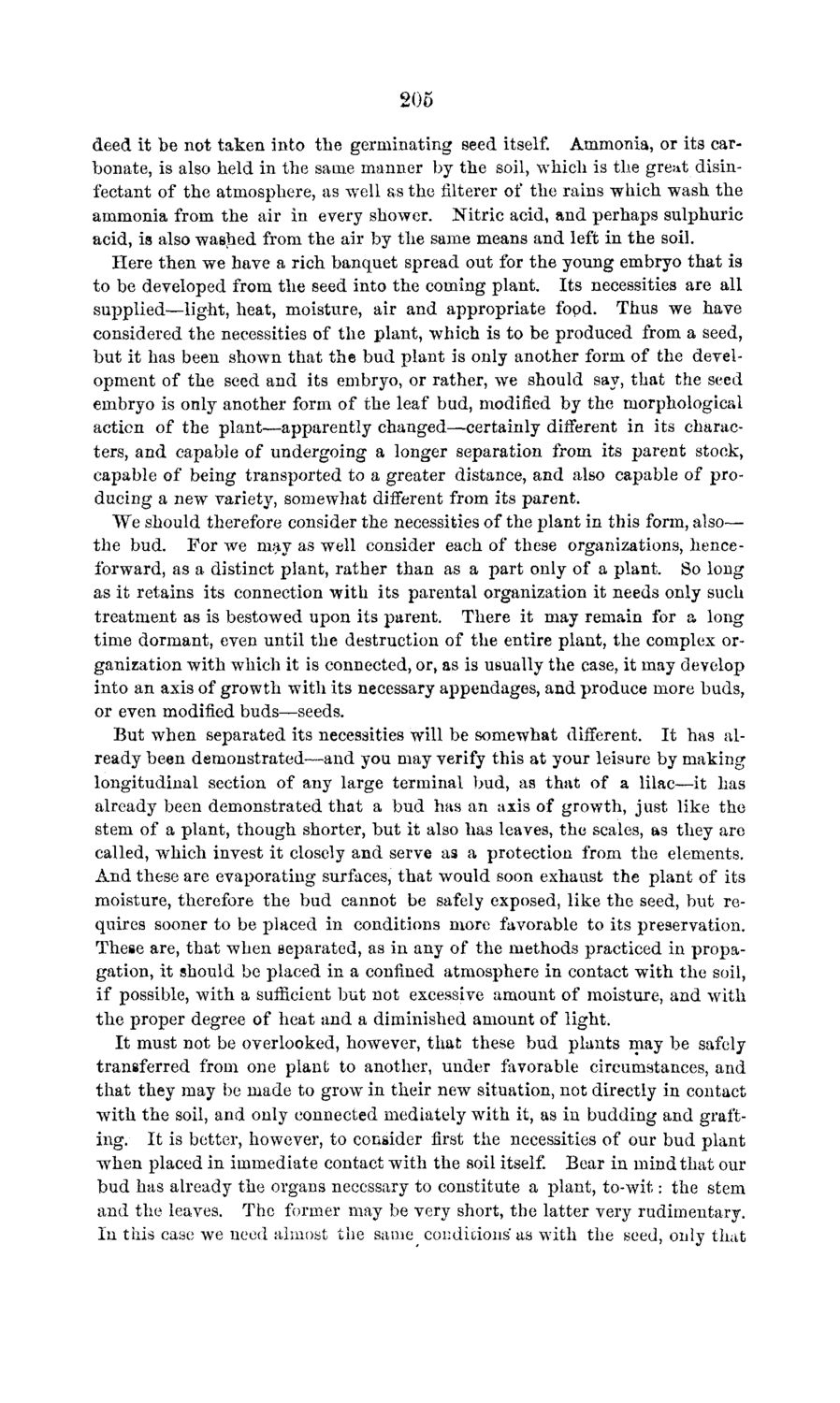| |
| |
Caption: Board of Trustees Minutes - 1869
This is a reduced-resolution page image for fast online browsing.

EXTRACTED TEXT FROM PAGE:
205 deed it be not taken into the germinating seed itself. Ammonia, or its carbonate, is also held in the same manner by the soil, which is the great disinfectant of the atmosphere, as well as the filterer of the rains which wash the ammonia from the air in every shower. Nitric acid, and perhaps sulphuric acid, is also washed from the air by the same means and left in the soil. Here then we have a rich banquet spread out for the young embryo t h a t is to be developed from the seed into the coming plant. Its necessities are all supplied—light, heat, moisture, air and appropriate fopd. Thus we have considered the necessities of the plant, which is to be produced from a seed, but it has been shown t h a t the bud plant is only another form of the development of the seed and its embryo, or rather, we should say, that the seed embryo is only another form of the leaf bud, modified by the morphological action of the plant—apparently changed—certainly different in its characters, and capable of undergoing a longer separation from its parent stock, capable of being transported to a greater distance, and also capable of producing a new variety, somewhat different from its parent. We should therefore consider the necessities of the plant in this form, also— t h e bud. For we may as well consider each of these organizations, henceforward, as a distinct plant, rather than as a part only of a plant. So long as it retains its connection with its parental organization it needs only such treatment as is bestowed upon its parent. There it may remain for a long time dormant, even until the destruction of the entire plant, the complex organization with which it is connected, or, as is usually the case, it may develop into an axis of growth with its necessary appendages, and produce more buds, or even modified buds—seeds. But when separated its necessities will be somewhat different. It has already been demonstrated—and you may verify this at your leisure by making longitudinal section of any large terminal bud, as that of a lilac—it has already been demonstrated that a bud has an axis of growth, just like the stem of a plant, though shorter, but it also has leaves, the scales, as they are called, which invest it closely and serve as a protection from the elements. And these are evaporating surfaces, that would soon exhaust the plant of its moisture, therefore the bud cannot be safely exposed, like the seed, but requires sooner to be placed in conditions more favorable to its preservation. These are, that when separated, as in any of the methods practiced in propagation, it should be placed in a confined atmosphere in contact with the soil, if possible, with a sufficient but not excessive amount of moisture, and with t h e proper degree of heat and a diminished amount of light. I t must not be overlooked, however, that these bud plants may be safely transferred from one plant to another, under favorable circumstances, and t h a t they may be made to grow in their new situation, not directly in contact w i t h the soil, and only connected mediately with it, as in budding and grafting. I t is better, however, to consider first the necessities of our bud plant when placed in immediate contact with the soil itself. Bear in mind that our b u d has already the organs necessary to constitute a plant, to-wit: the stem and the leaves. The former may be very short, the latter very rudimentary. I n this case we need almost the same conditions'as with the seed, only that
| |